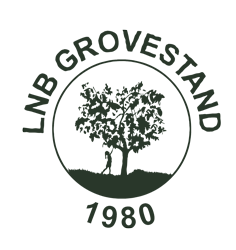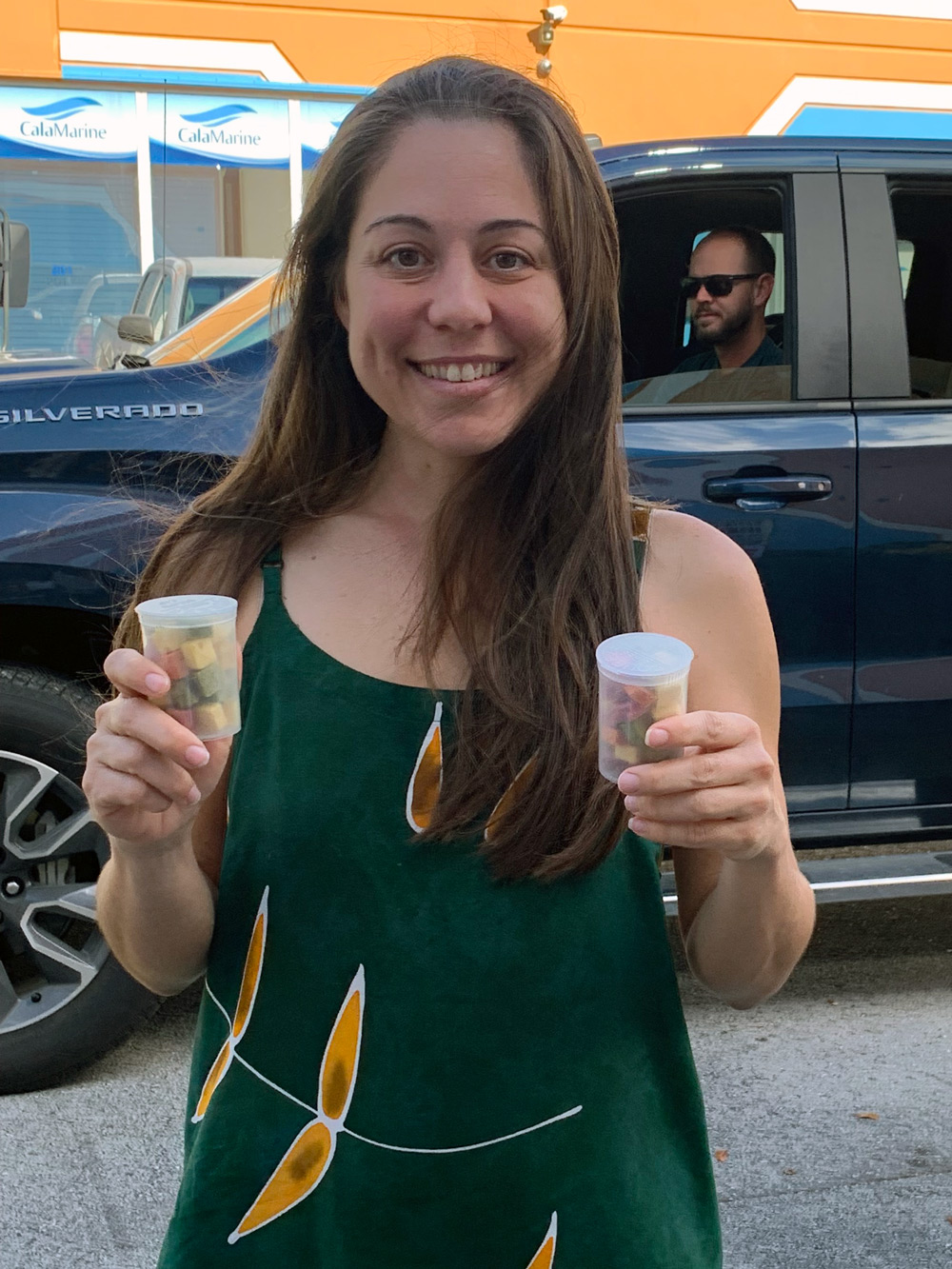
Jay
Name:
Jay
In what part of town do you live?
We live here in Kendall, not too far from your grove stand. We’ve been here coming up on seven years.
Would you share a little bit about what you do during the week?
I am a professor of music at the University of Miami. That’s what brought us here to Florida seven years ago. Previously, I was the director of bands and a professor of music at the University of Arizona in Tucson. I was there for 21 years when the University of Miami gave me a call and wanted me to take over the band program here at the University of Miami. Interestingly enough, I did my undergraduate degree at University of Miami back in the eighties. So it’s been a homecoming of sorts for me to come back to my alma mater and take over the bands. Never would I have predicted that.
Where are you originally from?
I grew up in Detroit then I came down to Miami for college because the music school was really strong – particularly the jazz programs. I ended up being very involved in the band world as well. I was the drum major of the marching band during the 1980s when we were playing games at the old Orange Bowl. Then my career took me out West and I taught in Los Angeles, that’s where I met my wife, Wendy, who you also know.
What are your responsibilities in your role now at UM?
If you go to Hard Rock Stadium for a Miami Hurricanes football game, or you go to the Watsco Arena and see a Miami Hurricanes basketball game, pre and hopefully post pandemic, you’ll hear the groups that I direct. We have a very extensive rehearsal schedule throughout the fall and spring semesters. We have students who are music majors, and then we have students from all over the university who are journalism majors or computer science majors. So, the most high profile thing I do is run those bands. I also teach in the music education area, which is a passion of mine because I want to continue to help future band directors and future music teachers. I teach a little bit in the jazz program as well, which takes me all the way back to my roots as a jazz performance student. It’s a wonderful experience being on the faculty.
What do you enjoy about marching bands?
There’s a lot of things I love about them. It’s really two different activities that you’re going to do simultaneously. You’re playing music like any symphony orchestra, but then we’re also marching around the field making formations and trying to create a real visual component to the music we’re playing. It’s like a specific choreographed dance while playing music. I’ve often compared as, ‘if you go see Swan Lake, the ballet, the members of the violin section are actually also dancing.’ It’s a really challenging, exciting, and unique kind of activity.
Do you design the formations as well?
I also do a lot of the work with the, what we call the drill design, the formations and the movements. I have a wonderful associate director of bands with me, named Doug McCullough, and he helps as well. Most of your high level band directors are gonna have expertise in arranging the music and creating the formations.
I think of marching bands as a tradition. What is new in the field?
There’s certainly been a big move over the last 20 years towards more intricate and complex formations. It’s more interpretive rather than – ‘here’s a picture of a boat and we’re going to play sailing away, or form the shape of an airplane and play leaving on a jet plane, you know?’ Now you’ll see a lot more creative shapes that aren’t supposed to represent any one particular thing. They’re just supposed to enhance your experience of hearing the music. If the music is abrasive, intense, and aggressive, then you’re making shapes that are aggressive and coming straight at the audience. There’ve been a lot of changes in the technology too. I mean, when I first started working in marching band, we were doing everything by hand. I would write a little dot on a grid piece of paper for every single movement that every single member was making. And of course now there’s software that allows us to design the formations and watch the animation. We can see what it’s going to look like on the computer before we take it out to the students on the field.
What does it take to be a good band director?
That’s a great question. For me, one is that I am completely honest with my students. It’s not always obvious in education. I think you have to be really passionate about music making. You have to understand that music making is something that is powerful in the human experience. It makes us more human. It makes us more in touch with our emotional life and the artistic side of our world. It doesn’t hurt if you’re a sports fan too, because you’re going to spend a lot of time at games.
Are there any performances that stand out in your mind when you think of the work you’ve done?
There are so many, but I’ll tell you one brief story. It was 2017 and the Miami Hurricanes qualified for the ACC championship game in Charlotte. The first weekend of December, the band flew up to Charlotte and we we’re going to perform at the big pro football stadium there against Clemson. Their band was there too of course. We wanted to bring the two college bands together and have them join to play the national anthem. We set up a rehearsal at a high school. We decided to perform for each other. The Clemson band performed their halftime show for us, and then we performed our halftime show for them. That performance was truly one of the most special, energetic, spectacular performances our band has ever given. I think it goes to show that that making music and elevating your experience is not necessarily about a packed stadium. It’s just about really committing to the moment and believing in yourself and believing in the moment.
If you were going to give a lay person advice on watching a marching band, what would you say?
See the whole picture. Watch the motion of the band, don’t get stuck watching one thing for the whole show. And, it’s always really gratifying to the students when the audience reacts and joins in or applause afterwards. People can take that sound in the background for granted. So I would ask people to notice, not just the halftime show, but throughout the game and be supportive of these wonderful students. We’re putting in such an enormous amount of time and energy to enhance everyone’s experience.
You and Wendy have been by the grove stand a few times. What’s that experience like?
Gosh, we just enjoy it. It is not only the produce and the rainbow smoothies. (Oh my God, I could drink one of those every day and you just feel so healthy afterwards.) I just love the few times we’ve come by and see you and Adena working hard, it’s just such a positive vibe. If I’m standing there, picking up whatever we’re going to get, and see anybody else who’s there, even in their car, you just get a sense of community and you get a sense of health and wellbeing. That speaks highly of what’s going on there.
You have both been using our turmeric, how are you using it?
Wendy and I both have used in different ways. It definitely has a real effect on inflammation. And, it helps you feel better. I really enjoyed the new little Turmeric ‘Golden Melt’ Cubes, that’s a life changer because I can walk by our kitchen table and the little thing is there. I’m like, ‘I’ll just pop one in my mouth, you know? It’s just yummy and it makes me feel good.’
What other businesses or restaurants do you all go to regularly?
Le Bouchon is a French place in the Grove that we just adore that we look forward to going back to someday. In terms of Mexican food, Talavera, in Coral Gables is really outstanding and authentic Mexican food. We were so excited to discover that place.
What’s Miami’s best kept secret?
Hate Mondays Tavern, which is this barbecue place here in Kendall in an industrial area. You’d never find it if you don’t know about it. It’s just some of the best barbecue I’ve ever had. It’s amazing.
What for you is a worthy splurge?
I am a voracious reader. I always have a book that I’m reading. A worthy splurge is to go on a little bit of a crazy shopping spree at a Barnes and Noble. It’s so interesting to get into other people’s minds and concepts and it’s so good for our brain.
What community groups or philanthropic groups are important to you that you might like to promote or share?
Guitars over Guns, they’re here in Miami and they’re also in Chicago and a couple other cities. It’s a music based activity for underserved communities. It’s a way to get young people involved in music rather than then guns. We’ve been able to sponsor a couple of events at the university that they’ve been involved with with our music fraternity. The Donna Shalala Music Reach is another organization that sends out University of Miami students to give music lessons to students throughout South Florida that wouldn’t have the opportunity to experience music lessons.
What question would you like to ask us?
(JR) How can we get a Rainbow Smoothie more times than once a weekend?
(A+W) We’ve talked about a couple ideas. One is opening the store on Wednesdays, the other is delivery once or twice a week.
What advice, challenge or question would you like to pose to the community?
I think that people are genuinely kind and good people. In a bigger sense, we’ve lost that as a culture. We are so quick to say negative mean things on social media or whatever it might be. I wish we could move forward to a place where people start from a place of understanding and kindness with each other.
What have I not asked that I should have?
The thing I’m most proud of in my entire life would be my family. That would be my wife and my two sons. They are the most amazing journey of all. As much as I love my students and I love the music making, but ‘Oh my gosh, being a husband and a parent has been so transforming in so many ways.’
Related Posts
Leave a Reply Cancel reply
You must be logged in to post a comment.



